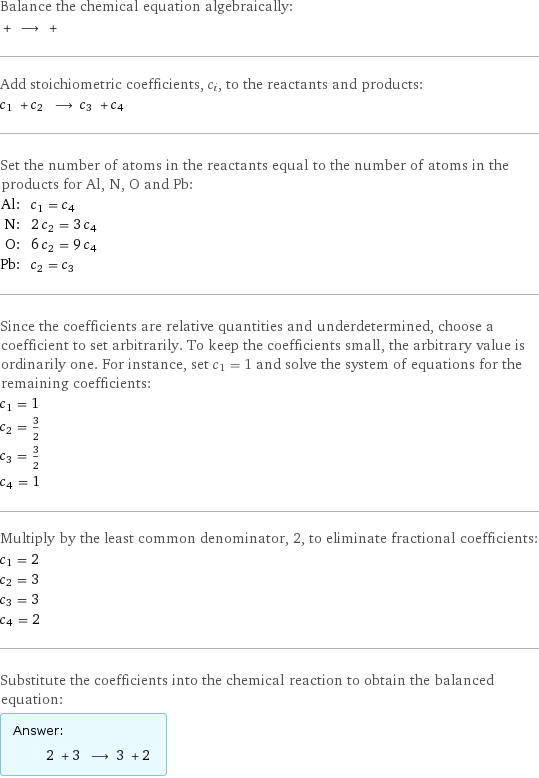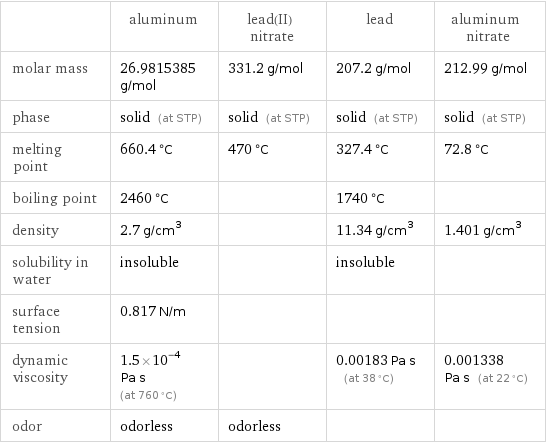Input interpretation

aluminum + lead(II) nitrate ⟶ lead + aluminum nitrate
Balanced equation

Balance the chemical equation algebraically: + ⟶ + Add stoichiometric coefficients, c_i, to the reactants and products: c_1 + c_2 ⟶ c_3 + c_4 Set the number of atoms in the reactants equal to the number of atoms in the products for Al, N, O and Pb: Al: | c_1 = c_4 N: | 2 c_2 = 3 c_4 O: | 6 c_2 = 9 c_4 Pb: | c_2 = c_3 Since the coefficients are relative quantities and underdetermined, choose a coefficient to set arbitrarily. To keep the coefficients small, the arbitrary value is ordinarily one. For instance, set c_1 = 1 and solve the system of equations for the remaining coefficients: c_1 = 1 c_2 = 3/2 c_3 = 3/2 c_4 = 1 Multiply by the least common denominator, 2, to eliminate fractional coefficients: c_1 = 2 c_2 = 3 c_3 = 3 c_4 = 2 Substitute the coefficients into the chemical reaction to obtain the balanced equation: Answer: | | 2 + 3 ⟶ 3 + 2
Structures

+ ⟶ +
Names

aluminum + lead(II) nitrate ⟶ lead + aluminum nitrate
Chemical names and formulas

| aluminum | lead(II) nitrate | lead | aluminum nitrate Hill formula | Al | N_2O_6Pb | Pb | AlN_3O_9 name | aluminum | lead(II) nitrate | lead | aluminum nitrate IUPAC name | aluminum | plumbous dinitrate | lead | aluminum(+3) cation trinitrate
Substance properties

| aluminum | lead(II) nitrate | lead | aluminum nitrate molar mass | 26.9815385 g/mol | 331.2 g/mol | 207.2 g/mol | 212.99 g/mol phase | solid (at STP) | solid (at STP) | solid (at STP) | solid (at STP) melting point | 660.4 °C | 470 °C | 327.4 °C | 72.8 °C boiling point | 2460 °C | | 1740 °C | density | 2.7 g/cm^3 | | 11.34 g/cm^3 | 1.401 g/cm^3 solubility in water | insoluble | | insoluble | surface tension | 0.817 N/m | | | dynamic viscosity | 1.5×10^-4 Pa s (at 760 °C) | | 0.00183 Pa s (at 38 °C) | 0.001338 Pa s (at 22 °C) odor | odorless | odorless | |
Units
